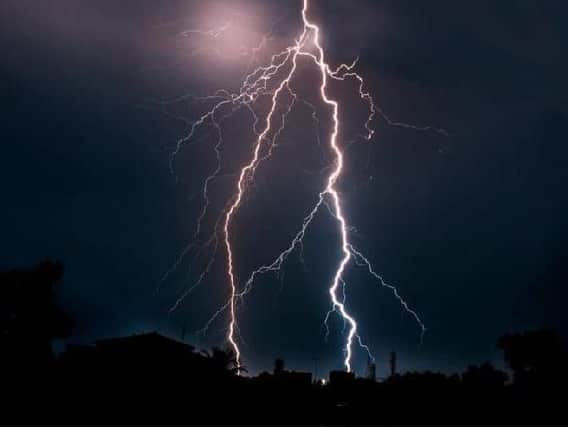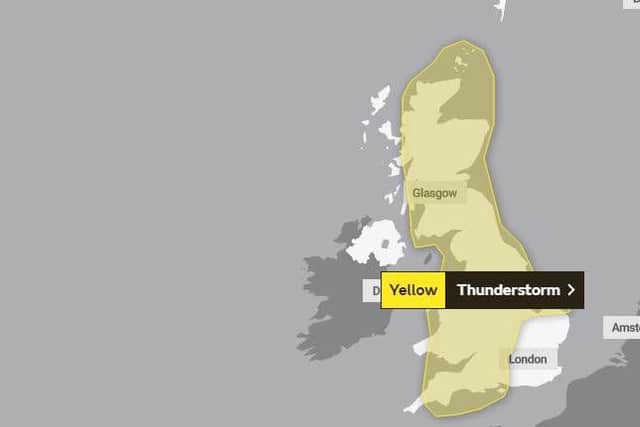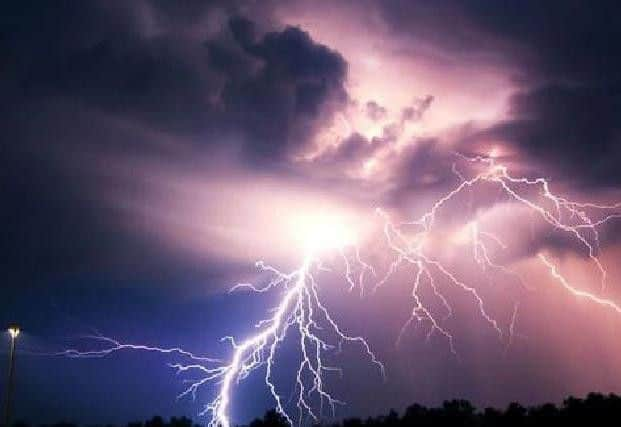This is how you can stay safe when thunder and lightning storms strike Lancashire tonight


The forecaster said the storms could affect the county off-and-on between 6pm this evening and 9am tomorrow morning.
People are being warned of potential damage to homes and businesses, high-rise structures and vehicles.
So, how can we stay safe in a thunder and lighting storm?


Learn how to protect yourself in a thunderstorm
Advertisement
Hide AdAdvertisement
Hide AdThere are many myths surrounding lightning - such as lightning never strikes the same place twice or it always strikes the tallest object.
According to weather experts, both are false.
Lightning strikes the best conductor on the ground - whether it has been struck before or not.


Make sure you know what to do
Thunderstorms can occur at any time of the year but it is during the summer months when thunderstorms in the UK are most likely to produce large hail, gusty winds and torrential downpours.
These storms can cause widespread disruption to transport networks and damage property.
Advertisement
Hide AdAdvertisement
Hide AdOne of the most notable aspects of thunderstorms can be the localised nature of the impacts they could bring.
This, in particular, can be the case with rainfall amounts, with big differences in amounts that fall from one place to another and over a very short distance.
This can make driving conditions very hazardous. Other hazards include hail, decreased visibility, sudden gusty winds, standing water and of course lightning.
Before a thunderstorm
Unplug all non-essential appliances, including the television, as lightning can cause power surges.
If you are outside, seek shelter if possible.
Advertisement
Hide AdAdvertisement
Hide AdWhen you hear thunder you are already within range of where the next ground flash may occur and lightning can strike as far as 10 miles away from the centre of a storm.
Dos and don'ts during a thunderstorm
Avoid using the phone - telephone lines can conduct electricity
Avoid using taps and sinks - metal pipes can conduct electricity
If outside avoid water and find a low-lying open place that is a safe distance from trees, poles or metal objects
Advertisement
Hide AdAdvertisement
Hide AdAvoid activities such as golf, rod fishing or boating on a lake.
Be aware of metal objects that can conduct or attract lightning, including golf clubs, golf buggies, fishing rods, umbrellas, motorbikes, bicycles, wheelchairs, mobility scooters, pushchairs, wire fencing and rails.
If you are in a tent, try to stay away from the metal poles.
If you find yourself in an exposed location it may be advisable to squat close to the ground, with hands on knees and with head tucked between them.
Advertisement
Hide AdAdvertisement
Hide AdTry to touch as little of the ground with your body as possible, do not lie down on the ground.
If you feel your hair stand on end, drop to the above position immediately.
After the thunderstorm
Avoid downed power lines or broken cables.
If someone is struck by lightning, they often suffer severe burns. The strike also affects the heart, so check if they have a pulse.
Driving in a thunderstorm
If you are caught out in thunder and lightning it is advised that you wind up the windows and stay inside your car.
Advertisement
Hide AdAdvertisement
Hide AdThis is because in the vast majority of cars with a metal roof and frame, the frame will act as a conductive Faraday cage, passing the current around the passengers inside and on to the ground.
Soft-top convertibles, with their fabric roofs, are the most at risk and could catch fire if struck by lightning.
Be aware that current can travel through other parts of many modern cars, including GPS and radio systems.
Cars with metal interior handles, foot pedals and steering wheels can also carry current.
Advertisement
Hide AdAdvertisement
Hide AdCars can be damaged both internally and externally by lightning strikes.
Thunderstorms can also bring a risk of sudden gusty winds, those most at risk would include cyclists, motorcyclists and high sided vehicles.
Remember to give vulnerable road users including cyclists, motorcyclists and pedestrians more room than usual. They are more likely to be blown around by side winds – always keep a safe distance.
Keep your speed down, lowering your speed will lower the distance you travel when buffeted around by the wind.
Advertisement
Hide AdAdvertisement
Hide AdGusts of wind can unsettle vehicles – grip your steering wheel firmly with both hands. This is particularly important when planning to overtake.
Keep an eye out for gaps between trees, buildings or bridges over a river or railway – these are some of the places you are more likely to be exposed to side winds.
Ensure that you maintain enough room either side of your vehicle so you can account for it being blown sideways.
Read our latest weather report to learn more about the UK-wide yellow weather warning and when it will strike in Lancashire.